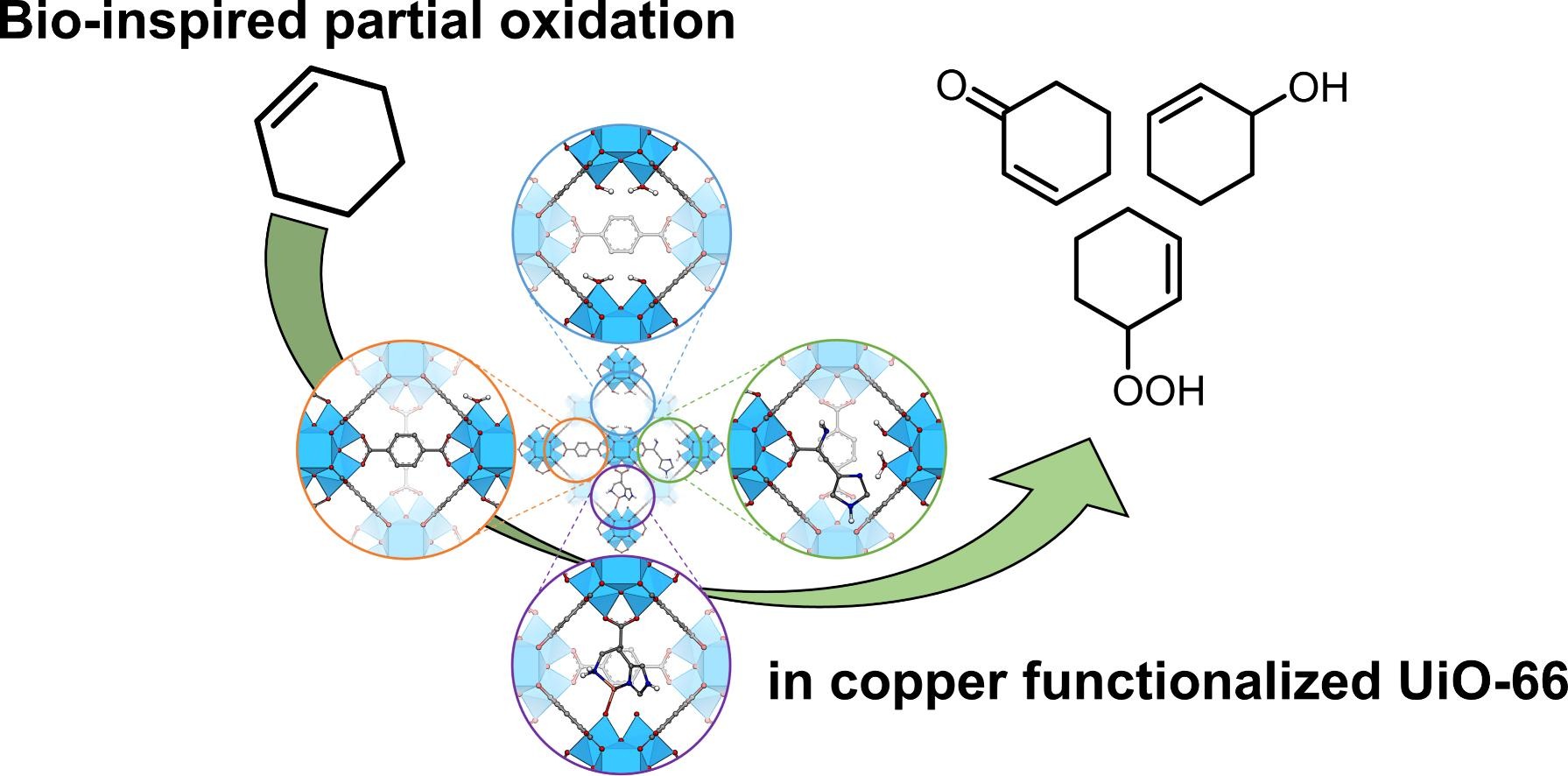Journal of Catalysis – Erlend Aunan, Valeria Finelli, Sebastian Prodinger, Ning Cao, Beatrice Garetto, Gabriele Deplano, Matteo Signorile, Elisa Borfecchia, Karl Petter Lillerud, Ainara Nova, Silvia Bordiga, Unni Olsbye.

Enzyme-inspired catalysis is an attractive approach for developing selective hydrocarbon partial oxidation processes. Here, histidine was introduced into defective UiO- 66 metal–organic framework by ligand exchange, followed by Cu(II) ion insertion. Density functional theory modeling combined with X-ray Absorption spectroscopy revealed that Cu(II) has a higher affinity for open Zr-O node sites than for histidine, leading to a series of materials where Cu(II) ions are predominantly anchored to the Zr6O4(OH)4 nodes, while only minority fractions of Cu(II) are anchored to histidine. Catalytic testing for aerobic cyclohexene oxidation with tert-butyl hydroperoxide (t-BuOOH) in trifluorotoluene solution at 25 °C showed activity for cyclohexene oxidation to cyclohexenol and cyclohexenone, with high selectivity. Benchmark tests revealed that Cu and t-BuOOH are both essential for the reaction, yet t-BuOOH consumption was far inferior to product formation rates, suggesting a radical reaction pathway involving O2 .
Click here for the complete article!